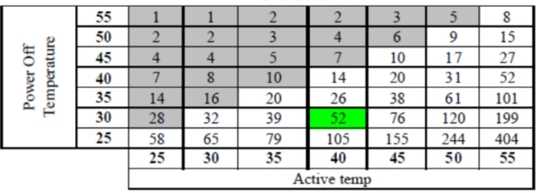SSD technology is rapidly evolving and SSDs have not been around long
enough for reliable statistics. I have dug around and found information
that indicates that SSD is not reliable as long-term shelf storage,
information that I will list below.
According even for my more general knowledge, much of the reliability and speed
of SSDs is due to the firmware. The firmware of an SSD does house-cleaning
tasks when it is not occupied with requests from the operating system.
These tasks include compacting data into blocks, refreshing bits
and continuously testing bits and mapping the doubtful ones to spare bits.
Actually, heavy-duty SSDs, also called "enterprise", are mostly distinguished
only by having a larger number of such spare bits.
These house-cleaning tasks are not possible when the SSD is stocked while
disconnected from power.
The Dell article of
Solid State Drive (SSD) FAQ (PDF) from 2011 states this :
Q: I have unplugged my SSD drive and put it into storage. How long can I expect the drive to retain my data without needing to plug
the drive back in?
A: It depends on the how much the flash has been used (P/E cycle used), type of flash, and storage temperature. In MLC and SLC, this
can be as low as 3 months and best case can be more than 10 years. The
retention is highly dependent on temperature and workload.

While SSD technology has much evolved since 2011, the above article is still
alarming. I note that it does not say that all the data will lost,
but only that some data lose may occur after some days, weeks or months.
A more recent 2016 paper from Google,
Flash Reliability in Production: The Expected and the Unexpected
(PDF),
is summarized in the article
SSD reliability in the real world: Google's experience.
Among the conclusions by Google are :
- High-end SLC drives are no more reliable that MLC drives.
- Bad news: SSDs fail at a lower rate than disks, but UBER rate is higher (UBER means Unrecoverable Bit Error Rate and is the percentage
of bits that have errors relative to the total number of bits that
have been read).
- SSD age, not usage, affects reliability.
- Bad blocks in new SSDs are common, and drives with a large number of bad blocks are much more likely to lose hundreds of other blocks, most
likely due to die or chip failure.
- 30-80 percent of SSDs develop at least one bad block and 2-7 percent develop at least one bad chip in the first four years of deployment.
The article concludes :
SSD UBER rates are higher than disk rates, which means that backing up SSDs is even more important than it is with disks. The SSD is less likely to fail during its normal life, but more likely to lose data.
Another 2015 article,
Hard Drives, SSDs, Flash Drives: How Long Will Your Storage Media Last?,
repeats the above data and adds :
Many SSD manufacturers will list data retention either as part of the specification or the warranty for their drives. The JEDEC Solid State Technology Association sets the industry standard at one year for consumer drives.
More alarming data comes in 2016 from Seagate’s Alvin Cox, who was part of a
presentation
to the Joint Electron Device Engineering Council (JEDEC),
picked up by
ZDNet,
Slashdot and other sites.
The ZDNet article about this presentation,
Leaving unpowered SSDs in a warm room can kill your data fast, says :
New research suggests that newer solid-state hard drives, which are faster and offer better performance, are vulnerable to an inherent flaw -- they lose data when they're left dormant in storage for periods of time where the temperature isn't properly regulated.
The worrying factor is that the period of time can be weeks, months, but even in some circumstances -- just a few days.
A recent presentation by hard drive maker Seagate's Alvin Cox warned that the period of time data is retained on some solid-state drives is halved for every 9°F (or 5°C) rise in temperature where its stored.
That means if a solid-state drive is stored in a warm room, say 77°F (25°C), its data can last for about two years. But, if that goes up by a mere few degrees to 86°F (30°C), that data's retention period will be cut in half.
The article
The Truth About SSD Data Retention
gives a more precise table for the calculated retention period in weeks before
errors, as a function of both the running and ambient storage temperatures,
for an SSD used by consumers (as distinct from enterprise) :

Keep in mind that the above table is only statistical in nature,
so that your particular SSD can do even better, or even worse,
than the above numbers.
My personal conclusion is that an SSD is a very reliable component when
placed inside the computer case on an external housing,
as long as it is regularly powered on and is not left unpowered
for a long period.
I would therefore not recommend SSD for long-term storage,
unless stored in the right temperature (which is what?)
and is regularly powered on, verified, and left powered on for a time
sufficient for the firmware to do its house-keeping
(which is how long?). SSD is not reliable enough for the long term
unless multiple copies are kept, which sort of defeats the purpose.
Much more reliable technologies than SSD exist for this purpose.

